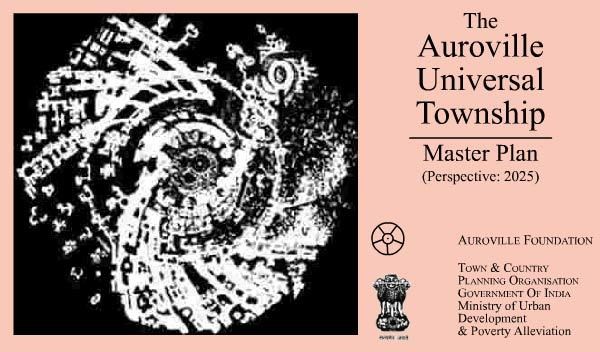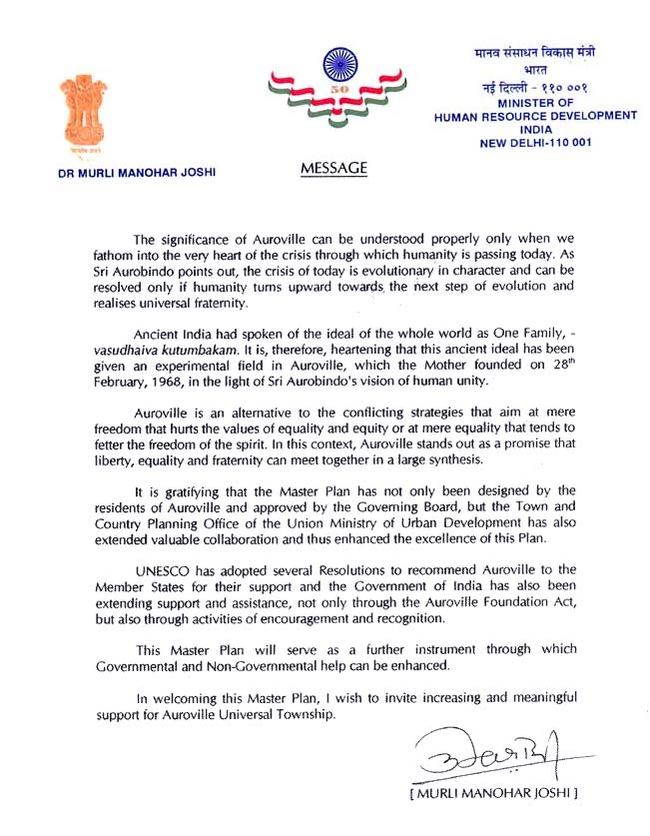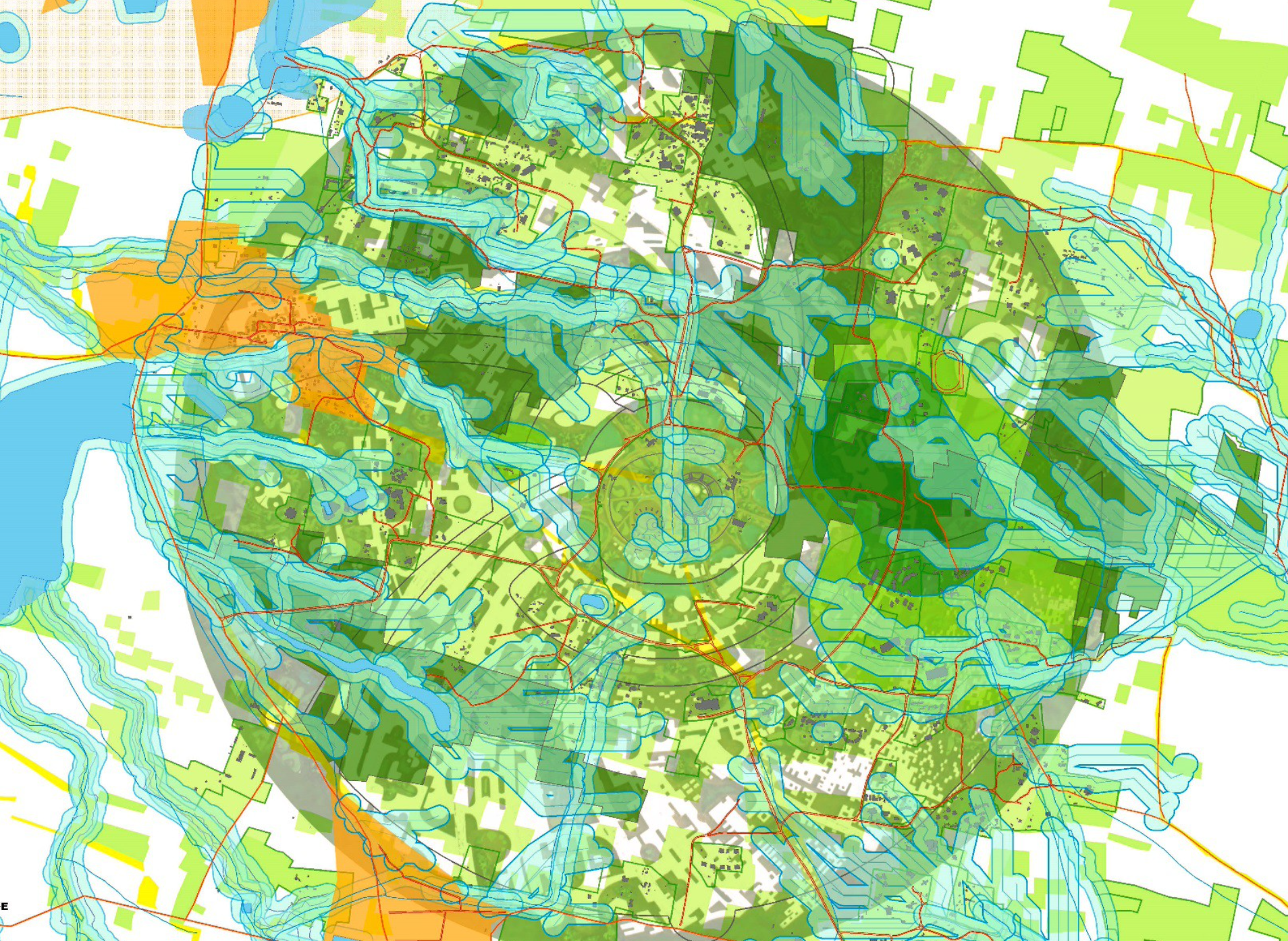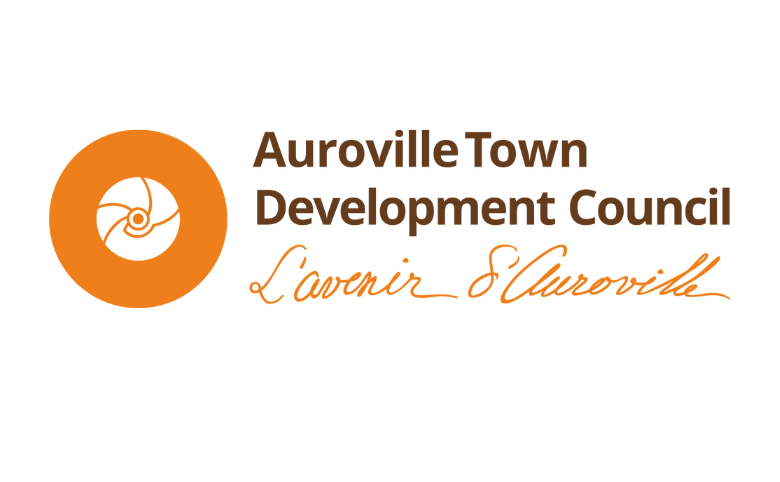The Master Plan

The Master Plan of Auroville would break new grounds in settlement planning which can help other cities in India and other countries experiencing high urbanisation trends. It would demonstrate how 'urban' and 'rural' areas can complementarily develop in an integral and holistic way for their mutual benefit and well-being.
A Master Plan prepared for urban areas serves as an important instrument to guide the process of urban development. Over the years it has emerged as an important approach to urban planning in the country. The concept of the Master Plan has no doubt made a discernible impact in regulating and channelising the development and growth of cities and towns. However, the issue of the Master Plan and its efficacy has been discussed in a National Workshop organised by the Ministry of Urban Development and Poverty Alleviation, which suggested a dynamic, transparent and effective approach to improve the efficacy of the Master Plan.
Accordingly, the Ministry of Urban Development and Poverty Alleviation, Govt. of India, entrusted a study to the Institute of Town Planners, India, on Urban Development Plan Formulation and Implementation (UDPFI) Guidelines. These guidelines have recommended a planning system consisting of a set of four interrelated plans with the Perspective Plan at its apex and Plans of Projects at the base, with the Development Plan and the Annual Plan facilitating the implementation of the Urban Perspective Plan. In line with these guidelines, this Master Plan (Perspective: 2025) of Auroville has been conceived.
The Master Plan (Perspective: 2025) provides a policy framework which will serve as a guide in the preparation of five-year Development Plans and Annual Plans for implementation of the proposals. It is presented in three parts. Part One describes the existing scenario and lays down the imperatives for development. Part Two lays down principles and directions for long-term growth and gives Development Proposals to make Auroville the most eco-friendly city. It lays down broad policies in terms of land utilisation, residential densities and qualitative and quantitative aspects of infrastructure development. Part Three gives the development promotion regulations and the procedure to be adopted for development.
View the complete Masterplan document here
Download PDF version here
Sri Aurobindo and the Mother diagnosed the contemporary crisis of humanity as an evolutionary crisis which could be resolved only if the consciousness of universal fraternity can manifest and bring about the actualisation of human unity. In order to aid this difficult objective, the Mother founded Auroville on 28th February 1968 as a Universal Township, 150 kms south of Chennai in south India and gave it a Charter. This Charter declares that Auroville belongs to humanity as a whole and that to live in Auroville one must be a willing servitor of Divine Consciousness. It further declares that Auroville will be the place of unending education and constant progress, a bridge between the past and the future, and that it will be the site of material and spiritual researches for a living embodiment of an actual human unity.
The Mother envisaged the Auroville township of an ultimate population of 50,000, with Matrimandir as its centre and soul. Since its inception, the township has been growing steadily.
Role of the Masterplan
The Auroville Foundation Act, 1988, enacted by the Government of India, is one of the important milestones in the development of Auroville. It provides a statutory support for preparation of Master Plan of Auroville to ensure orderly and planned development of Auroville. The Auroville township is designed to be in an area of 2000 ha. in a circular form of which about 850 ha. have already been acquired by the Auroville Foundation. The Master Plan envisages systematic development of the Township and prevention of any non-conforming developments in the area.
The Master Plan based on the original concept given by the Mother envisages intertwining of four major functional zones, namely, Residential, Cultural, International, and Industrial, -- around a Peace Area in the centre. About 25% of the township would be built up portion, surrounded by a green belt based on the concept of eco-friendly and sustainable development.
Innovative models and techniques in the field of afforestation, land development, water conservation, rainwater harvesting, building technology, community participation, energy saving, etc; incorporated in the Master Plan would be integral to the township development and management. Integrated urban and rural development strategies have also been envisaged.
See Also





